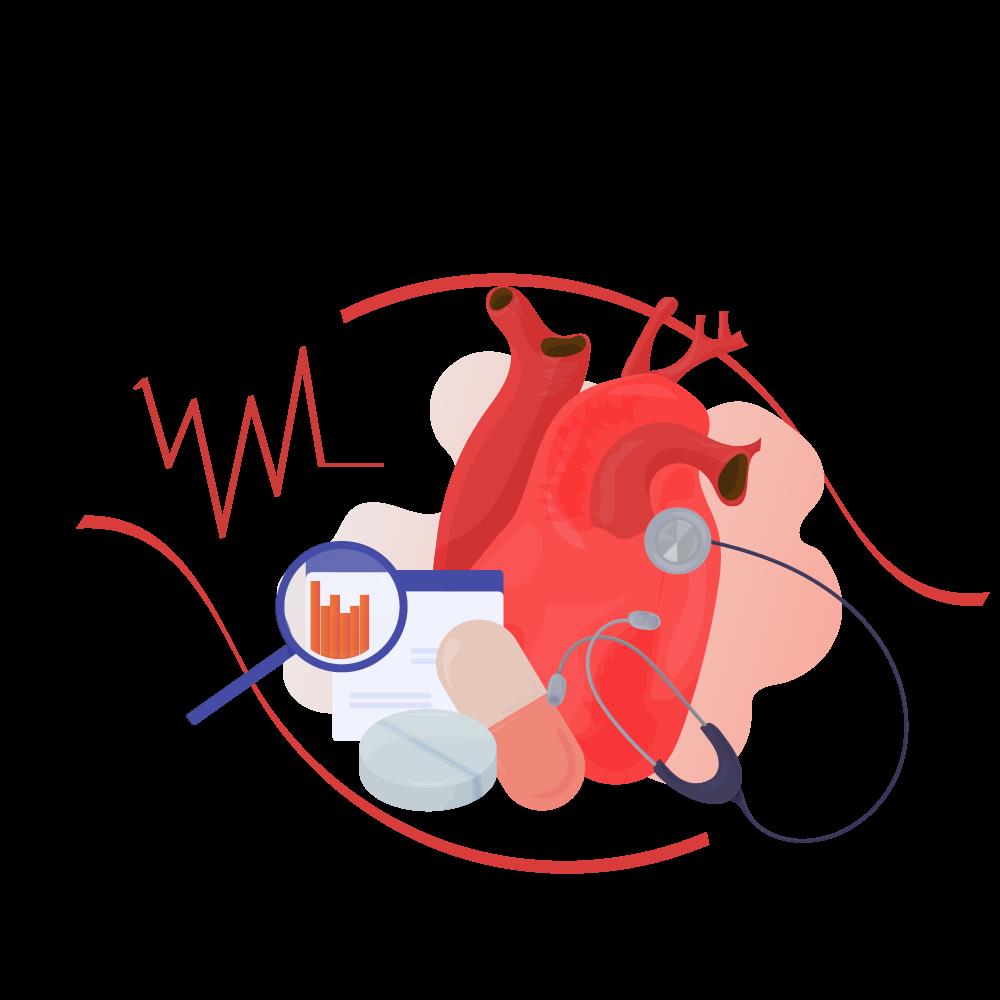▼ The author of this article ▼

Hypertrophic cardiomyopathy (HCM) is a myocardial disease with unknown causes, characterized by asymmetric myocardial hypertrophy, which usually means that the thickness of ventricular septum or left ventricular wall measured by echocardiography is ≥15mm, or the thickness of patients with a clear family history is ≥13mm, the ventricular cavity becomes smaller, the left ventricular blood filling is blocked, and the left ventricular diastolic compliance decreases. It is necessary to exclude the thickening of left ventricular wall caused by increased load such as hypertension, aortic stenosis and congenital aortic subvalvular diaphragm.
How to diagnose hypertrophic cardiomyopathy?
01exertional dyspnea
The most common symptom, about 90% or more will show this symptom.
02chest pain
Many patients will show fatigue chest pain, or atypical pain may continue to occur at rest or after meals, but coronary angiography is normal.
03Syncope or threatened syncope
About 15%-25% of patients have had at least one syncope or threatened syncope, which is usually seen during activity.
04Other symptoms
Dizziness, fatigue, palpitation, etc., some patients are at high risk of sudden death, and some patients have symptoms of heart failure in the late stage.
05pathological/bodily sign
Patients with no or mild obstruction often have no obvious signs, but patients with left ventricular outflow tract obstruction often have heart murmurs, especially after the first heart sound, which are obviously increasing and decreasing, especially between the apex of the heart and the left edge of the sternum.

Some tests are needed to assist the diagnosis in clinic.
01x-ray examination
X-ray examination has no obvious characteristics. The size of the heart may be normal, or the left atrium and left ventricle may be enlarged. The size of the heart is directly proportional to the pressure gradient between the heart and the outflow tract of the left ventricle. The greater the pressure gradient, the larger the heart. Aorta does not widen, pulmonary artery segment does not protrude obviously, pulmonary congestion is mostly light, and right ventricular enlargement may occur in the late stage.
02electrocardiogram
Because of cardiac ischemia, abnormal myocardial repolarization, left ventricular or biventricular hypertrophy and ST-T changes are common, atrioventricular block and left bundle branch block are also common, and sometimes deep and inverted T wave or abnormal Q wave can be seen, this disease often has various types of arrhythmia.
03ultrasonic cardiogram
It is of great significance for the diagnosis of HCM. The main performances are:
① Abnormal thickening of ventricular septum, and the thickness of ventricular septum at the end of diastole is > 15 mm..
② The motion amplitude of interventricular septum decreased obviously, generally ≤ 5 mm..
③ The ratio of ventricular septal thickness to left ventricular posterior wall thickness can reach 1.5-2.5:1, and it is generally considered that the ratio > 1.5: 1 has diagnostic significance.
④ The left ventricular end systolic diameter is smaller than normal, and the blood flow velocity of left ventricular outflow tract is accelerated.
⑤ The distance between the interventricular septum and the anterior leaflet of mitral valve is often significantly reduced at the start of contraction.
⑥ The systolic phase of the anterior leaflet of mitral valve moves forward, approaches the interventricular septum, and ends before the second heart sound.
⑦ Aorta closed in the middle systole.
04dynamic electrocardiogram
All patients have perfect 24-hour ECG monitoring, in order to evaluate whether there is ventricular arrhythmia and judge the cause of palpitation or syncope.
05Cardiac magnetic resonance
High sensitivity, but high cost. Myocardial fibrosis can also be found.
06Coronary angiography
Coronary angiography should be evaluated if the patient has angina pectoris or persistent ventricular arrhythmia.
07Cardiac catheterization
Left ventricular outflow tract obstruction is suspected, but the clinical manifestations and imaging examination are different; It needs to be differentiated from constrictive pericarditis; Preoperative evaluation of heart transplant patients.
08Gene detection
Most patients often have a family history and have genetic mutations.

Complications of hypertrophic cardiomyopathy
01arrhythmia
Ventricular arrhythmia and atrial fibrillation are common, and in severe cases, there are ventricular tachycardia, ventricular fibrillation and cardiac arrest, which can cause sudden cardiac death in severe cases.
02arterial embolism
The common site is the left atrial appendage, and it can also form thrombus in the left ventricle, which can cause arterial embolism after the thrombus falls off.
03cardiac failure
Due to myocardial hypertrophy, the compliance of ventricular relaxation is reduced, which can cause left ventricular diastolic dysfunction and increase left ventricular end diastolic pressure and left atrial pressure in the early stage. With the progress of the disease, it may be accompanied by left ventricular dilatation and contraction dysfunction, resulting in severe heart failure symptoms.

Image source of this article: Photo Network
Author’s introduction
Xu Hui
Xuzhou Central Hospital
Attending physician of cardiology department
Introduction:Master’s degree, graduated from the Department of Cardiology, Yangzhou University, worked in the 3A hospital for several years, and mastered the diagnosis and treatment of various common diseases in cardiology, such as coronary heart disease, hypertension, arrhythmia, valvular disease, heart failure and other diseases.